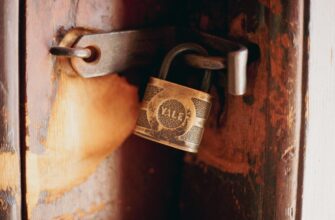👑 Airdrop Royalty: $RESOLV Awaits!
💰 Want to build your crypto empire? Start with the free $RESOLV airdrop!
🏆 A golden chance to grow your wallet — no cost, no catch.
📅 You’ve got 30 days after registering. Don't wait too long!
🌟 Be among the first movers and enjoy the biggest rewards.
🚀 This is your gateway to potential wealth in Web3.
- Why Crypto Wallet Security Can’t Be Ignored
- Step-by-Step Crypto Wallet Protection Protocol
- Step 1: Select Your Wallet Wisely
- Step 2: Fortify Access Points
- Step 3: Master Key Management
- Step 4: Implement Transaction Safeguards
- Step 5: Maintain Digital Hygiene
- Step 6: Establish Backup Protocols
- Advanced Protection Tactics
- Crypto Wallet Security FAQ
- What’s the single most important security step?
- How often should I change passwords?
- Are hardware wallets worth the cost?
- Can stolen crypto be recovered?
- How do I spot wallet phishing scams?
- Final Security Checklist
Why Crypto Wallet Security Can’t Be Ignored
With over $3.8 billion stolen in crypto hacks during 2022 alone (Chainalysis report), protecting your digital assets isn’t optional—it’s essential. Unlike traditional banks, cryptocurrency transactions are irreversible. Lose access to your wallet or fall victim to hackers, and your funds vanish permanently. This step-by-step guide delivers battle-tested strategies to transform your crypto wallet into a digital fortress.
Step-by-Step Crypto Wallet Protection Protocol
Step 1: Select Your Wallet Wisely
- Hardware Wallets (Ledger, Trezor): Offline storage for maximum security
- Mobile/Desktop Wallets (Exodus, Trust Wallet): Convenient for small amounts
- Paper Wallets: Physical printouts of keys – hacker-proof but easily damaged
- Avoid exchange wallets for long-term storage (not your keys, not your crypto!)
Step 2: Fortify Access Points
- Create 12+ character passwords with symbols, numbers, and mixed case
- Enable Two-Factor Authentication (2FA) using authenticator apps like Google Authenticator—never SMS
- Biometric authentication where available (fingerprint/face ID)
Step 3: Master Key Management
- Write seed phrases on fireproof metal plates (never digital)
- Store copies in 3 separate physical locations (safe deposit box, home safe, trusted relative)
- Never share keys or seed phrases—legitimate services won’t ask for them
Step 4: Implement Transaction Safeguards
- Enable transaction confirmation delays for large transfers
- Use whitelisting to restrict withdrawals to pre-approved addresses
- Verify receiving addresses character-by-character before sending
Step 5: Maintain Digital Hygiene
- Update wallet software immediately when patches release
- Install antivirus and firewall protection on all connected devices
- Use dedicated devices for crypto transactions only
Step 6: Establish Backup Protocols
- Perform quarterly encrypted backups to multiple offline drives
- Test recovery process annually using small amounts
- Use multi-signature wallets for significant holdings
- Air-gapped transactions: Sign offline with hardware wallets
- VPN usage on public networks to prevent MITM attacks
- Separate wallets for trading vs. long-term holdings
- Smart contract audits before interacting with DeFi protocols
- ✓ Hardware wallet for primary storage
- ✓ Metal seed phrase backups in 3 locations
- ✓ Unique password + 2FA enabled
- ✓ Quarterly encrypted backups
- ✓ Regular software updates
Advanced Protection Tactics
Crypto Wallet Security FAQ
What’s the single most important security step?
Offline seed phrase storage. Digital copies are vulnerable to malware, while paper can be destroyed. Fireproof metal plates in secure locations are ideal.
How often should I change passwords?
Every 90 days for hot wallets, but focus more on unique passwords per service. Use a password manager like Bitwarden to generate/store complex credentials.
Are hardware wallets worth the cost?
Absolutely. For holdings exceeding $500, a $79 hardware wallet provides exponentially better security than free software alternatives.
Can stolen crypto be recovered?
Typically no—blockchain transactions are irreversible. Some centralized exchanges offer limited insurance, but decentralized assets rely solely on your security measures.
How do I spot wallet phishing scams?
Watch for: urgent “security alert” emails, fake wallet updates, impostor support accounts on social media, and URLs with subtle misspellings (ledg3r.com vs ledger.com).
Final Security Checklist
Implementing these steps creates overlapping security layers—if one fails, others stand guard. Remember: In crypto, you are your own bank. Treat wallet security with the seriousness of guarding a vault, because that’s exactly what you’re doing.








